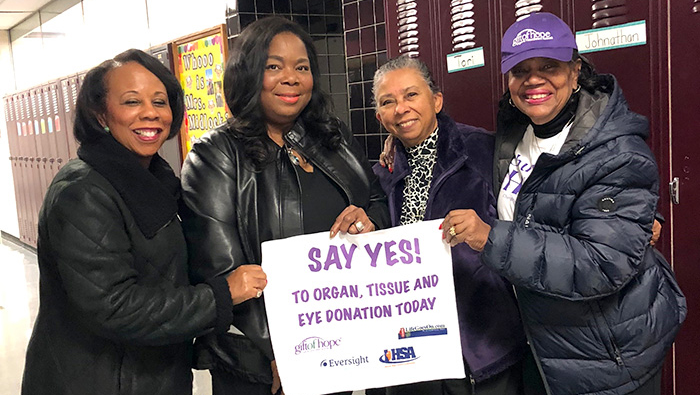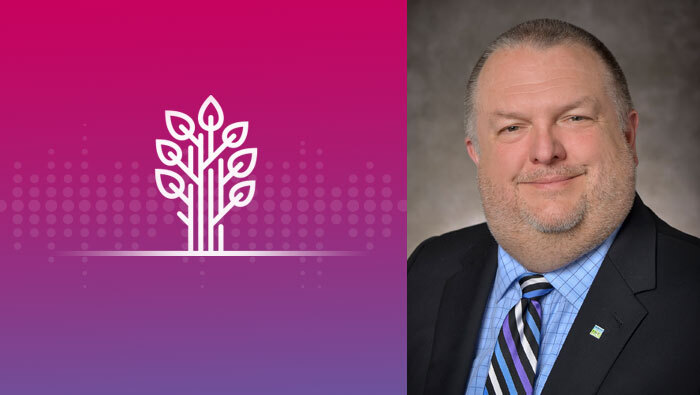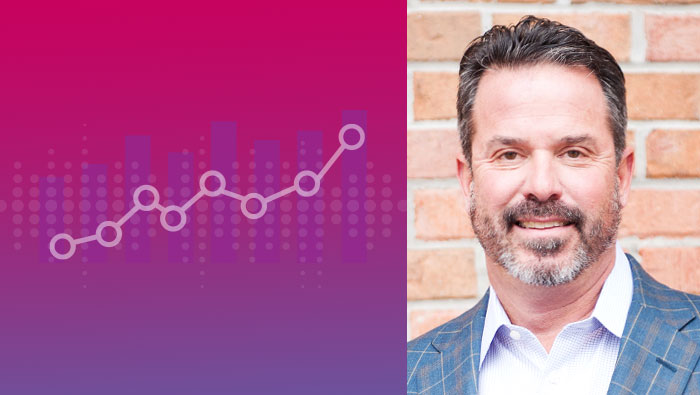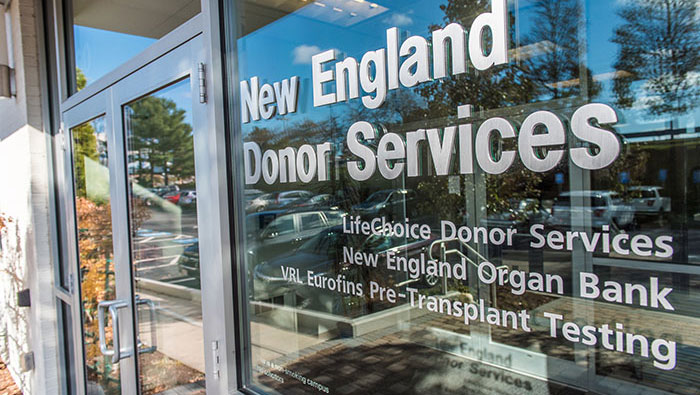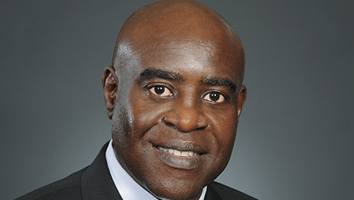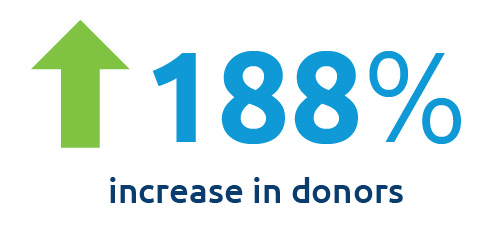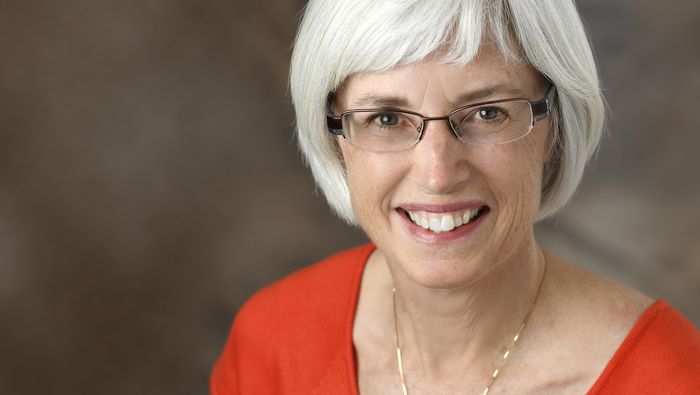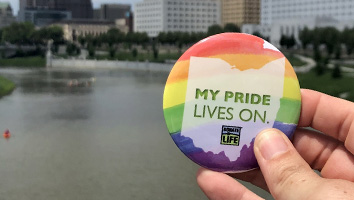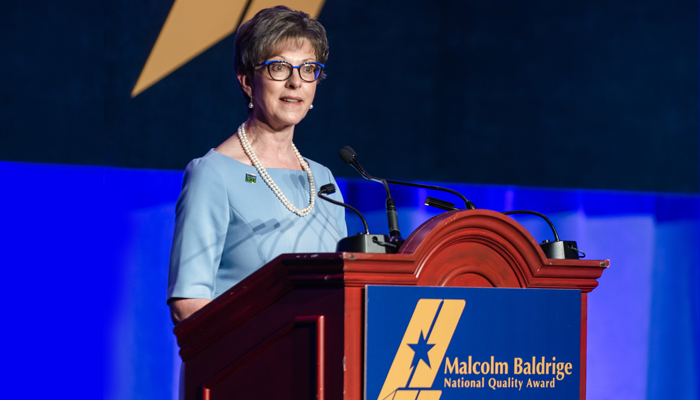
Improvement
Measuring the organ offer process
OurLegacy's Ginny McBride shares how the Florida-based OPO has used the UNOS Benchmark Report to maximize liver offers
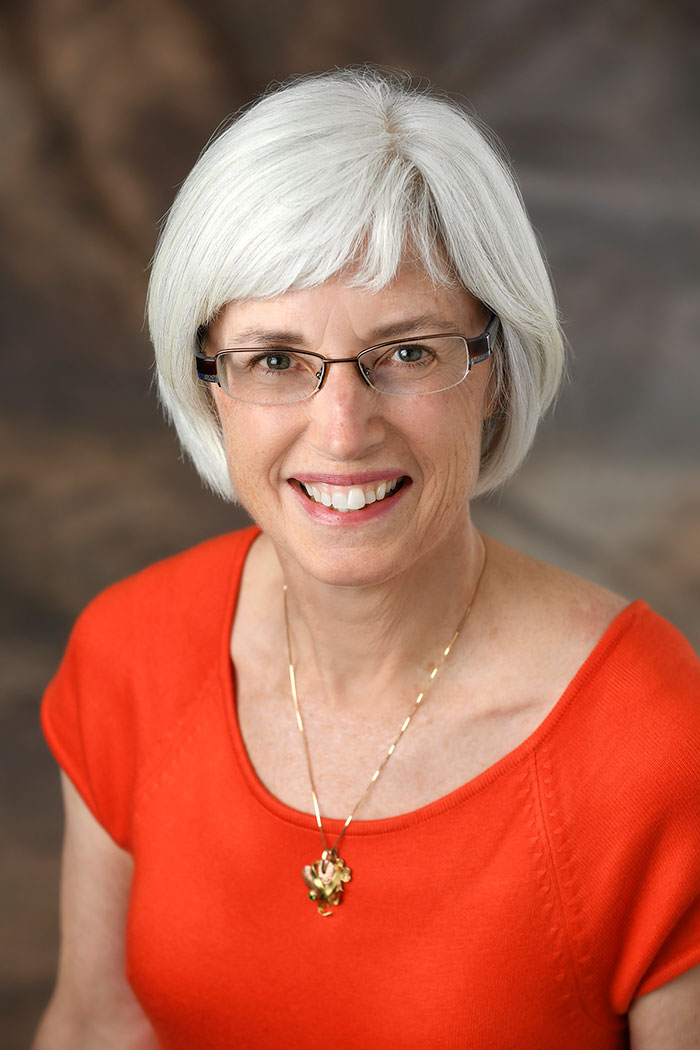
Ginny McBride, OurLegacy Organ Procurement Organization, Executive Director
“In 2018, we learned that our OPO was making liver placement attempts at a lower rate than our peers in Region 3 and nationally,” explains Ginny McBride, Executive Director of OurLegacy.* “We would never have known this without the UNOS OPO Benchmark Report. We have made our leadership team aware of the finding and we will be deliberate in 2019 about not ruling livers out before we make placement attempts.”
Since June of 2018, UNOS benchmark reports have provided OPOs the ability to compare their own organ offer data with that of others. On a quarterly basis, every OPO can download the custom three-chapter report from the UNetSM Data Services Portal to learn how its placement attempts compare to others and how its processes affect their ability to recover and place organs.
We recently caught up with McBride to learn about how OurLegacy, which serves east-central Florida, uses the report in its Quality Assurance and Performance Improvement (QAPI) program and how it can help them place more livers.
Q: What was your center’s reaction when you saw your liver offers weren’t as aggressive as you thought?
A: It surprised me, so I brought it to the attention of our medical director and our assistant director of clinical operations, and honestly it surprised them too, so we wanted to start working to change that. One of the ways we monitor ourselves on the metrics we want to improve is by putting that metric into our annual quality improvement plan with the report. With this particular metric on offering livers, we’ll be monitoring that in real time to make sure that don’t prevent ourselves from running a liver list and making phone calls.
Q: What about this reporting feels different than other data reporting you have access to?
A: There aren’t a whole lot of ways for us to compare some of our process work—we have a lot of ways to compare our outcome work in terms of the number of donors and the number of transplants and conversion rates. Those are important, but to actually have the opportunity to look at some process data [is new]. The organ offer process we do relentlessly, but we don’t have a way to see how well we’re doing compared to how some of our peers are doing it—so to have access to this benchmark report on organ offering was really exciting.
Q: What other UNOS tools do you use in your improvement efforts?
A: We also use the OUT (Organ Utilization Tool) report that UNOS produces to help us work with our transplant centers to help them understand the disposition with our organs, and with organs that our local centers are declining that go out to be transplanted elsewhere. So that’s also a really useful tool.

In 2018, OurLegacy increased donors by 13.7 percent
*Formerly TransLife Organ & Tissue Donation Services
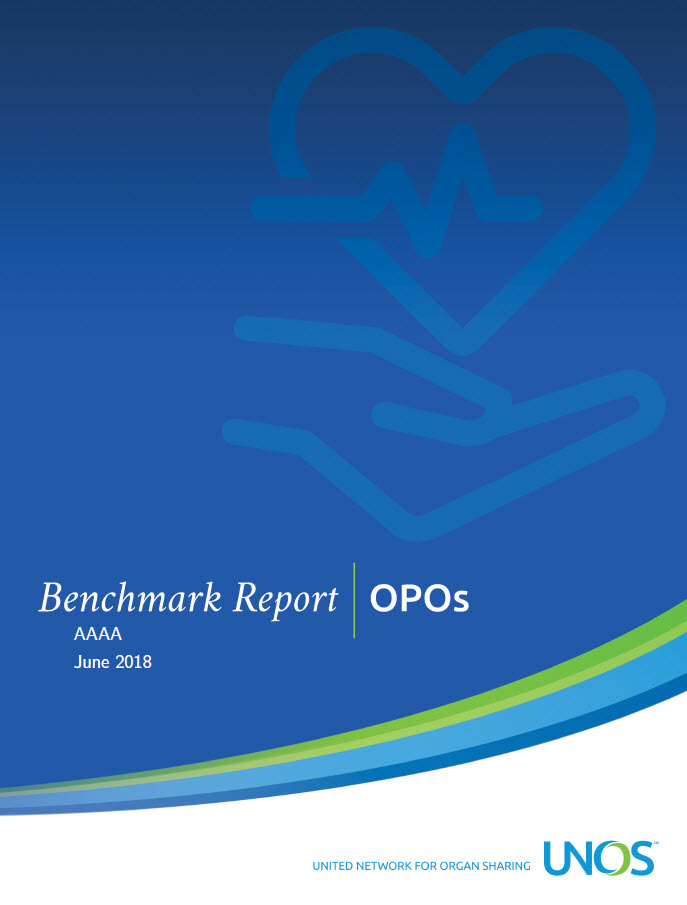
OPO Benchmark Report
To learn more about UNOS Benchmark Reports and other data tools on the UNetSM platform, email [email protected] or [email protected]
Data tools help OPOs increase transplants
UNOS Research Scientist Read Urban on how the community's needs shape the tools he builds
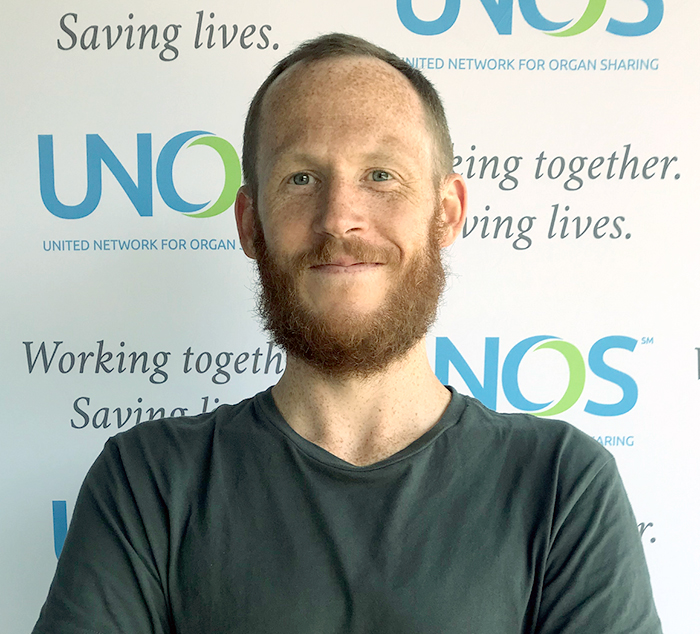
Read Urban, UNOS Research Scientist
Q: You are the OPO Benchmark Report Project Owner—what were the overall goals of the project?
A: The goals were to provide data that previously wasn’t available in this format to OPOs. I always refer to this and the Transplant Center Benchmark Report as sister documents. I want OPOs and transplant programs who review metrics together to be able to bring tools to the table that have the same look and feel and are really different sides of the data coin from the OPO perspective and the transplant perspective. We want to provide tools for quality improvement to increase transplants.
The suite of tools like Benchmark Reports and the OUT (Organ Utilization Tool) and RUM report (Recovery and Utilization Map) are actually connected. Some take a more macro look that can help centers identify certain metrics and others provide more granular detail. For instance, if you identify candidate trends on your waiting list through the benchmark report, you can then use some of these other tools to provide you candidate-level information and actually drill down to get more specific details about other confounding issues. You need them together to find trends before looking more closely.
Q: How did dialogue with the community help inform your project?
A: A lot of our approach in developing these kinds of projects involves gathering feedback from the community. The OPO Benchmark report happened in tandem with the expansion of the RUM Report in 2018. We had multiple conversations with key OPO members over the course of several months that helped shape what we developed.
We put our ideas on the table and asked, “Would this help you?” We received constructive feedback both positive and negative. Our OPO partners talked specifically about data that would be potentially useful in certain other parts of the report and we took all that to heart, so it wasn’t something we just put in front of the community as a finished product. As an example, we got important advice that it was going to be too long—so we cut it down by a third.
Whenever I talk about the reports in the community, one of the key things I want people to come away with is that we need their feedback to make this a valuable tool.
Read Urban earned a Master of Public Health degree from Virginia Commonwealth University in 2015, and joined the UNOS team in 2016. He supports the OPTN Pancreas Committee and Ad Hoc Systems Performance Committee. UNOS recognized Read with the “Value U” award in 2018 for demonstrating UNOS Core Values in Action.
“In 2018, we learned that our OPO was making liver placement attempts at a lower rate than our peers in Region 3 and nationally,” explains Ginny McBride, Executive Director of OurLegacy.* “We would never have known this without the UNOS OPO Benchmark Report. We have made our leadership team aware of the finding and we will be deliberate in 2019 about not ruling livers out before we make placement attempts.”
Since June of 2018, UNOS benchmark reports have provided OPOs the ability to compare their own organ offer data with that of others. On a quarterly basis, every OPO can download the custom three-chapter report from the UNetSM Data Services Portal to learn how its placement attempts compare to others and how its processes affect their ability to recover and place organs.
We recently caught up with McBride to learn about how OurLegacy, which serves east-central Florida, uses the report in its Quality Assurance and Performance Improvement (QAPI) program and how it can help them place more livers.
Q: What was your center’s reaction when you saw your liver offers weren’t as aggressive as you thought?
A: It surprised me, so I brought it to the attention of our medical director and our assistant director of clinical operations, and honestly it surprised them too, so we wanted to start working to change that. One of the ways we monitor ourselves on the metrics we want to improve is by putting that metric into our annual quality improvement plan with the report. With this particular metric on offering livers, we’ll be monitoring that in real time to make sure that don’t prevent ourselves from running a liver list and making phone calls.
Q: What about this reporting feels different than other data reporting you have access to?
A: There aren’t a whole lot of ways for us to compare some of our process work—we have a lot of ways to compare our outcome work in terms of the number of donors and the number of transplants and conversion rates. Those are important, but to actually have the opportunity to look at some process data [is new]. The organ offer process we do relentlessly, but we don’t have a way to see how well we’re doing compared to how some of our peers are doing it—so to have access to this benchmark report on organ offering was really exciting.
Q: What other UNOS tools do you use in your improvement efforts?
A: We also use the OUT (Organ Utilization Tool) report that UNOS produces to help us work with our transplant centers to help them understand the disposition with our organs, and with organs that our local centers are declining that go out to be transplanted elsewhere. So that’s also a really useful tool.

In 2018, OurLegacy increased donors by 13.7 percent
*Formerly TransLife Organ & Tissue Donation Services

OPO Benchmark Report
To learn more about UNOS Benchmark Reports and other data tools on the UNetSM platform, email [email protected] or [email protected]
Data tools help OPOs increase transplants
UNOS Research Scientist Read Urban on how the community's needs shape the tools he builds

Read Urban, UNOS Research Scientist
Q: You are the OPO Benchmark Report Project Owner—what were the overall goals of the project?
A: The goals were to provide data that previously wasn’t available in this format to OPOs. I always refer to this and the Transplant Center Benchmark Report as sister documents. I want OPOs and transplant programs who review metrics together to be able to bring tools to the table that have the same look and feel and are really different sides of the data coin from the OPO perspective and the transplant perspective. We want to provide tools for quality improvement to increase transplants.
The suite of tools like Benchmark Reports and the OUT (Organ Utilization Tool) and RUM report (Recovery and Utilization Map) are actually connected. Some take a more macro look that can help centers identify certain metrics and others provide more granular detail. For instance, if you identify candidate trends on your waiting list through the benchmark report, you can then use some of these other tools to provide you candidate-level information and actually drill down to get more specific details about other confounding issues. You need them together to find trends before looking more closely.
Q: How did dialogue with the community help inform your project?
A: A lot of our approach in developing these kinds of projects involves gathering feedback from the community. The OPO Benchmark report happened in tandem with the expansion of the RUM Report in 2018. We had multiple conversations with key OPO members over the course of several months that helped shape what we developed.
We put our ideas on the table and asked, “Would this help you?” We received constructive feedback both positive and negative. Our OPO partners talked specifically about data that would be potentially useful in certain other parts of the report and we took all that to heart, so it wasn’t something we just put in front of the community as a finished product. As an example, we got important advice that it was going to be too long—so we cut it down by a third.
Whenever I talk about the reports in the community, one of the key things I want people to come away with is that we need their feedback to make this a valuable tool.
Read Urban earned a Master of Public Health degree from Virginia Commonwealth University in 2015, and joined the UNOS team in 2016. He supports the OPTN Pancreas Committee and Ad Hoc Systems Performance Committee. UNOS recognized Read with the “Value U” award in 2018 for demonstrating UNOS Core Values in Action.

